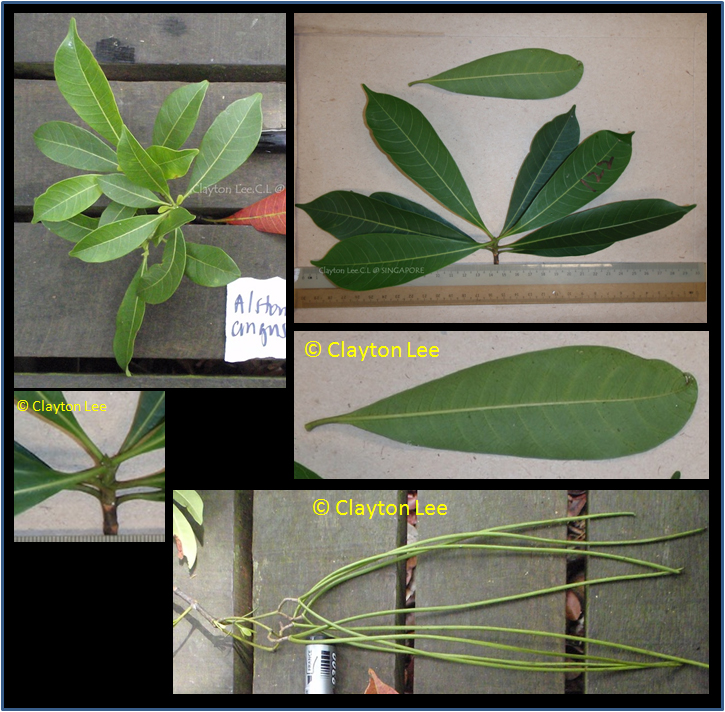Alstonia angustifolia Wall. ex A.DC., Prodr. 8: 409 (1844)
Species name meaning 'with narrow leaves'.Synonyms
Alstonia angustifolia var. elliptica King & Gamble
Alstonia angustifolia var. latifolia King & Gamble
Alstonia beccarii (Benth.) Pichon
Alstonia latifolia (King & Gamble) Ridl.
Amblyocalyx beccarii Benth.
Diagnostics
Tree with white sap, but not in large amounts. Leaves in whorls of usually 3 leaves, lower surface
greenish, secondary veins not placed as close as some other members of the genus. Fruits very long
and narrow, greenish, placed in pairs; splitting open to expose many small seeds with two tufts of hairs
for wind dispersal.
Description
A small to medium-sized tree up to 35(-45) m tall, bole fluted or with small or steep buttresses,
up to 70 cm in diameter, outer bark smooth, fissured or scaly, inner bark yellowish, without latex;
leaves usually in whorls of 3, oblanceolate, 4-18 cm x 1.5-7 cm, acuminate, with 10-20 pairs of
secondary veins, petiole 8-30 mm long; inflorescence many-flowered, pedicel 0.5-2 mm long, calyx
and corolla densely tomentose outside; follicles glabrous. Seeds small and with hairs for wind dispersal.
[from PROSEA]
Ecology
In primary forest, seasonal peat swamps or hillsides, on sandy or granitic soils at 5-750(-1700) m altitude.
Uses
In Malaysia, the leaves are externally applied to the spleen area to treat remittent fever. The bark
is used for treating malaria. The wood is used as hard alstonia, but because the trees are small, it
is often only locally used.
Distribution
Peninsular Malaysia, Singapore, Sumatra, Bangka and Borneo.
Local names
Indonesia: medang pasir (Bangka), pulai pipit (Palembang).
Malaysia: itai setapoh, pulai (Peninsular), mergalang (Sarawak).
Vietnam: s[uwx]a l[as] h[ej]p, l[aas]c.
